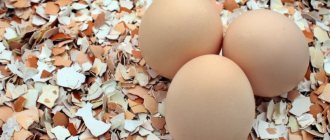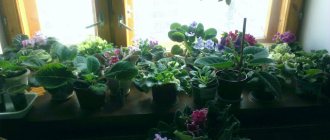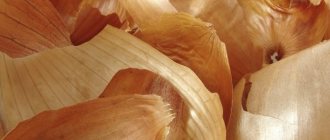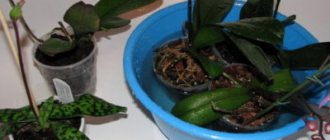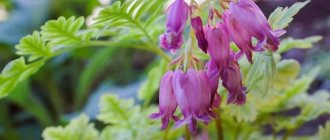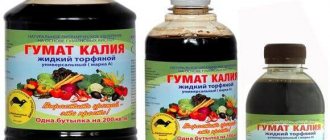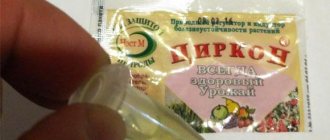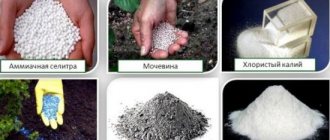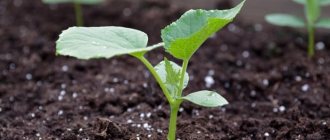Author of the article: Anna Vladimirovna | Updated: 01/14/2022
Are you looking for natural fertilizers for your home flowers because you don’t want to give preference to store-bought chemicals? There are many products that are always at hand and which can stimulate the full growth and development of indoor plants just as well. For example, eggshells are used as fertilizer by flower growers everywhere, not only for feeding house plants, but also those growing in the garden or vegetable garden.
Nuances during preparation
Eggshells have a crystalline structure, so they easily release organic substances to plants. The main thing is not to be lazy, prepare the material in the required quantity and do high-quality processing. The shelf life of the harvested raw materials will depend on this. You will need to perform a few simple steps:
- clean the shells from protein residues and remove the film;
- wash to keep the material clean. This eliminates the possibility of the shell becoming rotten;
- dry in an oven or other place so that the shell becomes brittle;
- grind in a blender, coffee grinder, through a meat grinder or crush with a mortar;
- Place in a paper bag or jar with a lid for storage.
Mulching the soil
Almost every day we use eggs for cooking. If not scrambled eggs, then for salads or baked goods. Therefore, even during the winter you can accumulate a certain number of shells.
If you grind it, not necessarily to the point of flour, and sprinkle it on the trunks of fruit trees or garden beds, you will get an excellent mulch. It will not rot quickly or dissolve. But it will protect the soil from drying out, nourish the soil with useful substances, and prevent the growth of weeds.
Methods of use
The harvested material is used as fertilizer in two ways.
Dry
Take a whole shell and remove the top. Several small holes are made at the bottom; you can use a needle for this. Pour some soil onto the bottom, place a seed and cover with a thin layer of soil. The shell acts as a container for the seedling. The grown seedlings are transplanted together with the shell, having previously kneaded it to allow young roots to sprout.
If there is a compost pit on the site in which organic matter, manure, leaves and grass rot, then adding eggshell powder will not harm it. The procedure will help reduce the acidity of the substance and replenish the compost with nutrients. Then compost is added when planting flowers in open ground, as well as in pots with indoor flowers.
You can also do drainage. Egg shells need to be clean and dry. If it goes rotten at the bottom of the pot due to poor quality processing, the roots will suffer and the flower will wither.
As a solution
The infusion of the shell is used as a fertilizer for soil in a pot and for foliar feeding of flower crops. Such a solution can enrich the substrate and help the plant grow and develop safely. How to make it yourself, in what proportions to take the material and how much time it will take to make it, we will consider in the article.
How to prepare fertilizer
Pour 1 cup of ground shells into 1 liter of warm water and leave to steep for two weeks. The liquid is stirred once every 2 days and filtered to remove sediment before use. Watering with this composition can be carried out no more than once a month.
If you need to quickly obtain fertilizer, make a solution using hot water. For 1 liter, 2 tablespoons of powder is enough, leave for 5 days. Water once every 3-4 weeks in moderate quantities, based on the size of the container.
For foliar feeding of indoor flowers, it is recommended to use the following composition: 100-150 g of powder per 3 liters of water. It is kept for 5-7 days, and before use it is diluted in a ratio of 1:3.
Benefits, harms and applications
Fertilizer application should be treated with great care. Considering that the shell reduces the acidity of the soil, it is unacceptable to add it to flowers that are suitable for acidic soil.
Houseplants that should not be fed with shell fertilizer:
They respond well to the application of such fertilizing:
- heliotrope;
- abutilone;
- indoor tradescantia;
- some types of ficus;
- palm trees;
- begonia;
- primrose;
- chrysanthemums.
Egg shells contain 93% calcium, iron, zinc, phosphorus, copper and potassium. If you follow the watering norm and timing of feeding flowers using shells, they will receive the nutrients they need for healthy growth and development.
The egg powder obtained by grinding can be mixed with the soil. For a medium-sized pot, take 1 tablespoon of powder; if there is a large container, then increase the amount. Sprinkle the soil in the pots with this mixture. The shell quickly decomposes, thanks to this property the plant will receive nutrients and grow.
It has long been known that egg shells contain many useful substances. That is why it is widely used as a fertilizer for various plants, which, after adding the shells, begin to grow faster and get sick less. It is also important that crushed shells decompose quite quickly in the ground. Both garden and indoor plants are fertilized with eggshells; the main thing is to prepare and use them correctly.
Good to know
And some practical advice. If you have a choice, it is better to use domestic chicken eggs as fertilizer for indoor plants and flowers. They eat a more varied diet, therefore, they contain relatively more nutrients. And the egg shell itself from such chickens is thicker, which means there are more benefits. By the way, there is an opinion that the shells of brown eggs are thicker than white ones. Maybe. But the biggest benefit of eggshells is that they reduce soil acidity. And this has a very positive effect on the development of plants and flowers.
Many summer residents prefer to improve the productivity of their vegetable gardens with the help of organic fertilizers. In particular, eggshells are widely used as fertilizer. This is a natural product that can revitalize the soil and accelerate the growth of many plant crops.
Nuances when preparing “egg fertilizer”
Before fertilizing indoor flowers with eggshells, you need to wash them well and clean them of protein residues.
Experienced flower growers advise using only homemade chicken eggs, which, thanks to the varied diet of chickens, contain more vitamins.
Next, the washed shells must be dried well. To do this, put it in a cardboard box and put it in a warm place.
After the shell is completely dry (this will take four days), it is crushed. Grinding methods depend on the further use of eggshells and the imagination of the grower - a mortar, a rolling pin, and a coffee grinder will do (if you need a fine powder).
Store the prepared “egg” fertilizer in a paper bag or box, or in a glass resealable container. Cellophane bags are not suitable for this - the shells in them will begin to deteriorate.
Growing seedlings
And here the shells will serve us well. Firstly, in shells filled with nutritious soil, you can plant seeds for seedlings. As it grows, the seedlings are planted in the ground or in seedling boxes along with the shell. True, first you need to break the underside with a spoon so that it cracks and the roots of the plant can grow further.
Secondly, calcium carbonate activates seed growth due to the proteins contained in the seeds. Thirdly, you can save on containers for growing seedlings. Even the cardboard cages in which eggs are sold can be put to good use by placing the same shells with seedlings there.
Ways to use eggshells
When growing indoor plants, eggshells are used:
- in the form of a tincture;
- as drainage;
- in the form of direct application to the soil;
- for growing seedlings.
To prepare an infusion from the shells, pour 1 cup of powder with 4 cups of warm water and leave to infuse for 2 weeks. Shake the tincture periodically. Water the flowers with prepared liquid fertilizer once a month. Another method of preparing the tincture is used: for 1 liter of boiling water, 2 tbsp. powder. This method is faster, since the liquid is infused for only 5 days.
You should not fertilize azaleas, camellias, gardenias, pelargoniums, hydrangeas, pansies and ferns with eggshells, as they love acidic soil, and the shells reduce the acidity of the soil.
When using the shell as drainage, it is enough to simply crumble it by hand without reducing it to a powder state. When planting indoor plants, place a 2 cm thick layer of shells on the bottom of the pot. This will help protect the flowers from rotting due to excess moisture.
To use egg powder in its pure form in a pot with a plant, you need to remove the top layer of soil and mix it in a separate container with 1 tbsp. powder. Then pour the soil with the shell back into the pot. The ground is prepared in the same way when planting plants.
Using shells for growing flower seedlings will make the seedlings stronger. It is more convenient to take whole shells with the top removed - this will give the plants more space. At the bottom of the egg you need to make 2-3 holes to drain excess water. When transplanting to a permanent place, the sprout can be transplanted along with the shell, but to make it easier for the roots to grow, it must first be gently kneaded with your hands.
Video about preparing liquid fertilizer from eggshells
Growing home flowers is quite an exciting activity. Moreover, its result is not only beautiful, but also useful for physical (thanks to the oxygen released) and psychological health, since contemplation of green plants relieves stress and restores mental balance.
But before the house is decorated with a riot of greenery, you will have to go through the sometimes difficult path of growing a small sprout into a beautiful flower. And not only good soil, lighting, temperature conditions and watering are important here. An important component is feeding - timely and complete.
Moreover, sometimes it is not at all necessary to buy a ready-made mixture; we have a lot in our kitchen. For example, eggshells, which we are used to throwing away as unnecessary. Meanwhile, it can be used to make an excellent fertilizer for indoor plants. With a minimum of labor and time costs, and no financial costs at all.
Soil deoxidation
If the soil is highly acidified, then the rate of application of shells is up to 1 kg per 1 sq. m. m. Collecting such a quantity of shells, of course, is problematic, provided that the weight of one shell is only 5-10 g. The only correct solution is to add egg flour directly into the hole when planting seedlings.
It is after adding flour that the soil, after watering or rain, does not form a dense crust with capillaries through which moisture evaporates. At the same time, the shell, like a leavening agent, works in the ground for several years, since it decomposes slowly. If you need to neutralize the soil faster, use dolomite flour.
Benefits of shells for plants
Initially, the egg shell serves to protect the embryo from the harmful influences of the environment. Plus, it contains all the necessary nutrients for the normal formation of the future chick. And all these “benefits” are preserved even if the eggs were used for food. Using shells as plant nutrition will allow you to add the following components:
- calcium carbonate, of which the egg shell contains about 90% of the total composition;
- phosphorus;
- potassium;
- magnesium;
- nitrogen;
- sulfur;
- iron;
- molybdenum;
- organic protein;
- other substances.
Plants need all this during the period of active growth, and, even more so, during flowering, when green pets require maximum nutrients. Of course, eggshells alone cannot become a complete source of vitamins and minerals for flowers. But as an additional feeding, this is one of the best options. Moreover, the shell, due to its crystalline structure, quickly and completely decomposes, giving everything the flowers need, unlike chalk and lime, which are often used as a source of calcium and magnesium.
Egg feeding at home
In addition to the undoubted benefits of the shell and its availability, an important advantage is that preparing future flower food is not difficult at all and it does not take much time. The main thing here is to prepare the eggs (or rather, what remains of them), and you can get started. There are several ways to make fertilizer at home from such a valuable ingredient. But one thing remains unchanged - only the shell of raw eggs is suitable as a top dressing; boiled ones already lose most of their benefits.
We are constantly receiving letters in which amateur gardeners are worried that due to the cold summer this year there will be a poor harvest of potatoes, tomatoes, cucumbers, and other vegetables. Last year we published TIPS on this matter. But unfortunately, many did not listen, but some still applied. Here is a report from our reader, we would like to recommend biostimulants for plant growth that will help increase the yield by up to 50-70%.
We advise you to prepare in advance for the summer season, pay attention to this biological product. There are a lot of positive responses.
- The simplest option is shells crushed in a coffee grinder or by hand. It can be mixed with soil prepared for planting. Or pour the shells onto the surface of the ground (about a third of a teaspoon per pot). Then, when watering, beneficial substances will flow to the roots of the flowers. But the first option is preferable, since the egg shell will gradually decompose in the ground, quickly releasing trace elements to the flowers. By the way, many experienced flower growers advise rinsing the shells well and drying them a little in the oven before use. This allows you to destroy possible pathogenic microorganisms, which can subsequently lead to root rot.
- Infusion from the shell. It is believed that in this way the eggs completely release all the benefits into the water, and there is no risk of the proliferation of harmful microorganisms if the workpiece has not been properly processed. To get liquid fertilizer for plants at home, you need to pour crushed (preferably powdered) shells from five eggs into a liter of boiled water.
Preparation of infusion from shells
Leave the mixture for five days, stirring occasionally. The resulting solution should be watered with indoor plants as usual. You can dissolve a little sugar in this infusion - such a remedy will be very useful for young plants. The glucose contained in such a solution will help new shoots develop, and calcium will make them stronger.
- A rather interesting option for using eggshells is to plant young shoots in it. If you need to propagate an adult plant, then cuttings that have already given roots can be planted not in a pot, but in the remains of an egg. This way, the young shoots will receive the calcium they need for growth, and upon subsequent transplantation they will already be quite strong. You can use either halves of the shell as a temporary pot for plants, or even better, carefully remove only the top. Several small holes should be made in the base to drain moisture, then soil should be poured into the temporary shelter and a flower should be planted. When the plant becomes strong, strong and has a powerful root system, it can be planted in the main pot. It is not necessary to remove it from the shell; it is even better to leave it for further fertilization of the soil. Only the temporary pot should be slightly kneaded before planting in the ground, so that it is easier for the plant to break through the shell, and this way it will begin to decompose faster, giving all the benefits to the sprout.
- Some gardeners believe that it is useful to use the water that remains after boiling the eggs. Allegedly, it contains mineral salts that are so beneficial to plants. How true this information is is unknown. In any case, there will be no harm. But you can reuse water, while saving your finances.
Basic mistakes
- Fertilizer for garden or house plants that prefer acidified soil. Some crops do not grow well in neutral or alkaline soil. They can be fed well, watered and loosened regularly, sprinkled with shells, but there will be no benefit. At best, plants will stop growing, and at worst, they will die. Cucumbers, radishes and pumpkins, like many flowers, do not like feeding with infusion of shells at all. It is useless to them, because it can only contribute to delayed growth and fruit formation.
- Scattering large shells over the beds. This procedure will do more harm than good. After all, raw materials must be turned into powder before being scattered.
- Leave the shell uncovered. Usually it is scattered over the field before digging, so as not to be left on the surface. They do this for a reason. Shells lying on the beds will attract birds, which are already damaging the productive beds.
Signs of excess and deficiency of essential substances
In addition to constantly feeding indoor plants, shells can also be used to replenish the deficiency of certain substances. The main thing is, of course, calcium, which, as you know, the shell of eggs is rich in. But other substances can also be obtained from it. True, their quantity is still not as large as required for a complete diet, and an additional source is needed, for example, phosphorus, magnesium or nitrogen.
Signs of calcium deficiency in a “green pet”
But before you try to fill this deficiency, you should understand that it still exists. If flowers lack calcium, then the following points will indicate this:
In general, the lack of this element is easy to notice. It is responsible for the vitality and strength of shoots, and the absence of calcium instantly turns a beautiful plant into something sick and dull. Gradually, the death of the flower may even occur if the necessary measures are not taken in time. That is, it is necessary to start fertilizing with compounds containing the necessary elements in large quantities. And this is where the shell will help.
But you also need to be careful with increased calcium supplementation. An excess of this substance is harmful to plants. If the leaves on the flowers begin to turn yellow, and the veins become dark, then, most likely, it is worth limiting feeding with mixtures containing this substance.
Signs of excess calcium in a houseplant
In addition to deteriorating the general condition and appearance of indoor flowers, calcium interferes with the absorption of other microelements. This may result in spots on the leaves, changes in color, shape, falling buds, curvature of shoots and other negative manifestations - this means that the flower lacks some nutrients. And it is not at all necessary to increase feeding. Perhaps you just need to cut down on additional nutrition with calcium mixtures.
We can definitely conclude that eggshells are very beneficial for indoor plants. Moreover, it is also an almost free fertilizer that can be made quickly at home. But, like any other fertilizer, it should be used carefully, without being overzealous. Otherwise, instead of beautiful plants, you may end up with stunted and diseased ones, which will then take a long time to restore.
If you immediately start caring for your pets correctly, maintaining balance in everything, there will be no more problems with flowers. Except for one thing – where to find a place for new pets. After all, when everything works out and the result of care is visible, you want to buy more and more potted plants.
Waste from our table: fertilizer for soil from shells
And a little about the author’s secrets
Have you ever experienced unbearable joint pain? And you know firsthand what it is:
- inability to move easily and comfortably;
- discomfort when going up and down stairs;
- unpleasant crunching, clicking not of your own accord;
- pain during or after exercise;
- inflammation in the joints and swelling;
- causeless and sometimes unbearable aching pain in the joints.
Now answer the question: are you satisfied with this? Can such pain be tolerated? How much money have you already wasted on ineffective treatment? That's right - it's time to end this! Do you agree? That is why we decided to publish an exclusive interview with Oleg Gazmanov, in which he revealed the secrets of getting rid of joint pain, arthritis and arthrosis.
